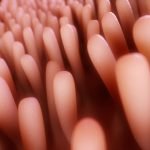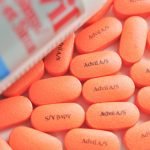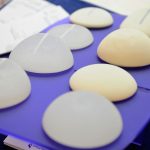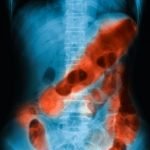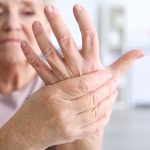Mold, Mycotoxins & Autoimmunity; Is There a Link?
Tolle Causam
Lauren Tessier, ND
At the turn of the 20th century, Paul Ehrlich, the immunologist and biologist who discovered a cure for then-rampant syphilis, coined the term “horror autotoxicus.” The term, which simply translates to “horror of self-toxicity,” refers to the body’s presumed unwillingness to attack itself. This unfortunate view led to large delays in the identification, study, and thus treatment too, of autoimmune diseases.1 As history always seems to repeat itself, but with a different twist, we need to keep in mind that such dictums, however well intentioned, have the ability to obscure the truth.
As the reader knows, the body has many mechanisms in place for preventing “horror autotoxicus” and building self-tolerance. The process occurs in different locations through clonal inactivation or clonal deletion.2 Central tolerance is the initial self-tolerance checkpoint, which takes place in the thymus for the T-cells and in the bone marrow for the B-cells. Meanwhile, peripheral tolerance acts as a secondary checkpoint. Yet, failures in these checkpoints do occur, as evidenced by the fact that nearly 5-7%3 of the population is affected by more than 80 autoimmune disease states,4 and by more than 100 when both autoimmune diseases and related conditions are considered.5
Despite the growing number of cases, the causes of autoimmune disease are still unclear. However, research suggests that the risk of autoimmunity may increase as a result of environmental exposures that alter gene expression, molecular mimicry, epitope spreading, and apoptosis.6 Infections are another important contributor to autoimmunity risk.7,8 The fungi kingdom should not be ignored here, as it is both a producer of pathogens and of environmental toxins.
In my practice, autoimmunity presents itself in many forms, the most common being autoimmune thyroid disorders, often parading as euthyroid. Additionally, many cases demonstrate generalized elevations in antinuclear antibodies (ANA), which often exhibit speckled and diffuse patterns. Admittedly, this could be the result of many factors, and perchance correlated to many factors of which I am otherwise unaware. I have the habit of referring to such presentations as “non-descript autoimmunity,” but in the clinical setting, rheumatologists have taken to identify these as “undifferentiated connective tissue diseases.” In these cases, the body expresses autoantibodies, but without a clear pattern that would otherwise classify the disease state as a traditionally known autoimmune disease, such as lupus, Sjogren’s, etc. Admittedly, clinical reports cannot equate to well-planned and executed research; however, they can act as a starting point.
As with any literature investigation, one will find mixed evidence and mixed opinions. Initial literature searches for mold, mycotoxin, and autoimmunity will result in a handful of studies espousing the lack of connection between them. One of my favorites – an article titled “The Myth of Mycotoxins and Mold Injury,”9 is well written and well researched, but penned with a certain perspective. It’s as if the lack of direct evidence omits all possibility of a link, as if there is no prospect for future research to support a stronger relationship, even in the face of advances in technology and science. I warmly invite the reader to read this piece before proceeding, keeping in mind that any institutional review board (IRB) would typically consider it unethical to knowingly expose a human subject to “damaging” mycotoxins.
Neuronal Autoimmunity
With that aside, there has been some published research that supports the concept that mold or mycotoxin exposure induces autoimmunity; let it be known that I am choosing to use “fungi” and “mold” interchangeably. A groundbreaking article, recently published in 2019, examined the impact of gliotoxin on experimental mouse models of autoimmune encephalomyelitis.10 Aspergillus fumigatus, a common but dangerous indoor mold – and one that can be identified on Environmental Relative Moldiness Index (ERMI) environmental testing – is a producer of gliotoxin. In this study, intraperitoneal injections of gliotoxin produced dose-dependent increases in neuroinflammation, which coincided with marked exacerbations of clinical symptomology.10 Even more importantly, the intraperitoneal injection not only had localized effects, but also systemic effects, specifically elevations of splenic interleukin (IL)-2, IL-6, and IL-17, as well as inflammation and demyelination of the central nervous system. All of this occurred despite the absence of aberrant kidney or liver function, potentially inferring that such low-level exposure can cause severe illness before the toxicological impact is ever noted on a CMP. Of additional note, the route of administration route, ie, intraperitoneal injections, results in 2-20 times less bioavailability in animal models when compared to the inhalation route of mycotoxins, in this case the Fusarium mycotoxin T-2, specifically.11
Another experimental mouse model of autoimmune encephalomyelitis (EAE) examined the impact of fungal infection on advancement of disease.12 In this study, mice were injected with Candida albicans, and those demonstrating an active infection were used. Three days following the initiation of the fungal infection, EAE induction occurred. The group with both C albicans infection and EAE suffered a more severe from of encephalitis when compared to EAE alone, infection alone, or simply normal controls. Elevations in the proinflammatory cytokines IL-6 and IL-17 were noted, which is often correlated with the autoimmune processes of multiple sclerosis (MS).12 Interestingly, the implication of fungi in the development of MS has come under consideration in recent years,13-15 though MS is not the only autoimmune condition being investigated for such links. Numerous studies have indicated fungal antibody correlations with a wide variety of autoimmune diseases, such as systemic lupus erythematosus,16,17 psoriasis,18,19 Crohn’s disease,20 ankylosing spondylitis,21 MS,13,22,23 and sarcoidosis.24 Meanwhile, other research demonstrates symptomatic improvements in autoimmune conditions such as psoriasis25 and MS26 following the use of antifungals.
A 2003 multi-site study analyzed numerous parameters in 209 adults exposed to water-damaged buildings containing numerous species of molds.27 The findings demonstrated elevations in antinuclear antibodies, anti-smooth muscle antibodies, antibodies to neurofilament antigen, and antibodies to the myelin of both the peripheral and central nervous systems, including IgG, IgM, and IgA; according to the study, “odds ratios for each were significant at 95% confidence intervals, showing an increased risk for autoimmunity.”27
Another study published in 2003 revealed the presence of neurological antibodies in those suffering from peripheral neuropathy who also had exposure to mold in their home or workplace.28 All of the subjects had significant elevations in all isotypes of the various neuronal antibodies when compared to controls. The highest levels of antibodies were those against myelin basic protein, tubulin, myelin-associated glycoprotein, and neurofilament antigen. Others, however, also made an appearance, including antibodies to ganglioside GM1, sulfatide, myelin oligodendrocyte glycoprotein, chondroitin sulfate, α-β-crystallin, and glutamate receptors.28
In 2017, a study examined neurological autoimmune impacts of environmental exposures on patients with neurological complaints.29 The study included a cohort of 8 females with known exposure to buildings containing water- or mold damage. Compared to controls, these individuals showed elevations in IgG neuronal antibodies to microtubule-associated protein-2, myelin basic protein, tau, glial fibrillary acidic protein, tubulin, and S-100B.29
Other Autoimmune Conditions
Neuronal autoimmunity is not the only type of autoimmune abnormality seen with mold and mycotoxin exposure. A feedstuffs study examined the effects of exposure in piglets to the mycotoxins deoxynivalenol (DON) and zearalenone (ZEA).30 An assessment of the differentially expressed genes of the livers of the studied piglets demonstrated an enhanced expression of the genes and genome pathways associated with autoimmune diseases such as type 1 diabetes and autoimmune thyroid disease.30
Using a collagen-induced arthritis model of rheumatoid arthritis (RA), a 2017 study showed that ingestion of ochratoxin A (OTA) or DON can perpetuate both the development and severity of RA in mice.31 Clinical severity of RA was significantly increased in both DON- and OTA-exposed mice as compared to controls. Additionally, the mice exposed to OTA and DON showed an increase in collagen-specific IgG1 antibodies, in conjunction with an increase in IL-B1 and IL-6. Of significant interest was the fact that both OTA and DON not only caused an increased stimulation of macrophages, they also caused an increased Th1/Th17 differentiation.31 Curiously, the dosage of OTA used in the study (0.17 mg/kg body weight) is many times lower than NOEL, or “no observable effect level”, of 21 mg/kg of body weight used in other OTA toxicology studies.32
Another animal study, published in the spring of 2019, demonstrated that the mycotoxin ZEA was able to trigger NET (neutrophil extracellular trap) formation by polymorphonuclear neutrophils.33 NET is involved in many pathological processes in the body, including autoimmunity and auto-inflammation. This research pointed to the creation and release of NET in response to the reactive oxygen species generated by ZEA, as opposed to its xenoestrogen nature. ZEA is a non-steroidal estrogen mimicker and is known to interfere with hormonal metabolism, as discussed in previous articles. The effects of estrogen on inflammation and its role in autoimmunity has been studied for quite some time34,35 and perhaps should be considered as another etiology for the autoimmunity seen in mold- and mycotoxin-exposed individuals.
In another mouse study, dietary exposure to DON led to elevations in serum IgA levels.36 Subsequent murine research showed that such DON-induced IgA elevations were accompanied by an increase in glomerular deposition,37 a phenomenon that bears a striking resemblance to the autoimmune condition IgA nephropathy. Moreover, such elevations of IgA are not only auto-reactive, but also polyspecific.38-40
A Review of the Immune Response
A general grasp of immunology may aid in making additional connections that aren’t otherwise directly spelled out in the literature. The general school of thought is that CD4 cells comprise different subsets based on the cytokines they secrete. At the risk of oversimplifying, Th1 cells generally secrete interferon-gamma (INFγ), tumor necrosis factor-beta (TNFß), and IL-2; Th2 cells secrete IL-4 and IL-5; and IL-3, IL-10, IL-13, and transforming growth factor-beta (TGFß) are secreted by both cell types.41,42 Naïve CD4+ cells, sometimes called Th0,43 are differentiated into Th1 and Th2 cells by various cytokines, in conjunction with other factors. Th1 cellular differentiation is initiated by exposure to STAT1, INFγ, IL-18, and IL-12,44-46 whereas Th2 differentiation is more complex. Th2 cells not only secrete IL-4, but also require it for differentiation.47
Th1 and Th2 cells seem to act antagonistically to one another, each selectively responsive to specific cytokines. Research suggests that a predominance of activated Th1 cells lacking self-tolerance underscores autoimmunity,48,49 and while Th2 cells seemingly do not, they do play a role in the formation of allergies.50 Th17 cells have also been implicated in autoimmunity, and are also descendants of Th0 cells. Th17 cellular differentiation is stimulated by exposure to IL-6, IL-17A, IL-23, IL-1ß, STAT3, and TGFß.42,51 Further complicating the matter, Th17 cells are considered to be plastic in their nature, and are able to transform into more pathogenic Th1 cells.52 The cacophony of T-helper cells is countered by T-regulatory cells, which are formed by exposure to IL-2 and TGFß and which also secrete TGFß and IL-10.42 If you recall back to the earlier discussion of self-tolerance, T-regulatory cells aid in the development of peripheral tolerance53 and are therefore essential in the fight against autoimmunity.
With this admittedly cursory introduction, we move forward to assess additional literature discussing mycotoxins. DON exposure to intestinal porcine epithelial cells has been shown to cause an upregulation of the genes required for the cellular differentiation of Th17 cells, specifically at the expense of T-regulatory cellular differentiation.51 Moreover, DON increases the expression of genes required for the induction of pathogenic Th17 cells, as opposed the lesser known subset of Th17 regulatory cells. Meanwhile, in mice, DON and OTA, both individually, are capable of inducing STAT3,31 which, as mentioned above, facilitates Th17 differentiation. Furthermore, studies analyzing the individual effects of OTA and DON exposure in mice demonstrated increased production of IL-1ß, IL-6, and IL-17, and increased gene expression of STAT-1, 3, and 4, roughly equating to a promotion of Th1 and Th17 cellular differentiation.31 OTA exposure in human nasal epithelial cells has been shown to cause an increase in the proinflammatory cytokines IL-6 and IL-854 and to activate c-Jun N-terminal kinase 2 in human proximal tubule cells,7 which is crucial for Th1 cellular differentiation.55 Another study demonstrated upregulation of gene expression for IL-6, IL-1ß, and STAT-1, 2, and 3 in murine macrophages exposed to DON and T-2 toxin individually.56 Such cytokine elevations may occur early during exposure, possibly before there is any clinical evidence of an inflammatory autoimmune disease state. A mouse study exemplified this scenario, wherein OTA and DON exposure caused a spike in IFNγ and IL-17 levels, well before clinical symptomology was noted; both cytokines are implicated in association with Th1/Th17 differentiation.31
Closing Comments
It appears that fully proving the connection between autoimmunity and mold/mycotoxin exposure would require a randomized controlled trial in humans. Thanks to the ethical standard of IRBs, this has not been, and hopefully will never be, completed. Therefore, we as clinicians are forced to do the next best thing: closely examine animal, longitudinal, and in-vitro studies and use our logic and knowledge of immunology to connect the dots. While it is imperative to treat patients using safe and well-studied interventions, it is also crucial to ask the clinical questions yet to be asked and to seek the answers within the best of our ability. After all, autoimmunity was once thought impossible.
References:
- Silverstein AM. Autoimmunity versus horror autotoxicus: the struggle for recognition. Nat Immunol. 2001;2(4):279-281.
- Blackman MA, Gerhard-Burgert H, Woodland DL, et al. A role for clonal inactivation in T cell tolerance to Mls-1a. Nature. 1990;345(6275):540-542.
- Scott FW, Cui J, Rowsell P. Food and the development of autoimmune disease. Trends Food Sci Technol. 1994;5(4):111-116.
- National Institute of Allergy and Infectious Diseases. Autoimmune Diseases. Last reviewed on May 2, 2017. NIH Web site. https://www.niaid.nih.gov/diseases-conditions/autoimmune-diseases. Accessed December 20, 2019.
- American Autoimmune Related Diseases Association Inc. Autoimmune Disease List. 2018. AARDA Web site. https://www.aarda.org/diseaselist/. Accessed December 20, 2019.
- Wang L, Wang FS, Gershwin ME. Human autoimmune diseases: a comprehensive update. J Intern Med. 2015;278(4):369-395.
- Özcan Z, Gül G, Yaman I. Ochratoxin A activates opposing c-MET/PI3K/Akt and MAPK/ERK 1-2 pathways in human proximal tubule HK-2 cells. Arch Toxicol. 2015;89(8):1313-1327.
- Bogdanos DP, Smyk DS, Rigopoulou EI, et al. Infectomics and autoinfectomics: a tool to study infectious-induced autoimmunity. Lupus. 2015;24(4-5):364-373.
- Chang C, Gershwin ME. The Myth of Mycotoxins and Mold Injury. Clin Rev Allergy Immunol. 2019;57(3):449-455.
- Fraga-Silva TFC, Mimura LAN, Leite LCT, et al. Gliotoxin Aggravates Experimental Autoimmune Encephalomyelitis by Triggering Neuroinflammation. Toxins (Basel). 2019;11(8). pii: E443. doi: 10.3390/toxins11080443.
- Creasia DA, Thurman JD, Wannemacher RW Jr, Bunner DL. Acute inhalation toxicity of T-2 mycotoxin in the rat and guinea pig. Fundam Appl Toxicol. 1990;14(1):54-59.
- Fraga-Silva TF, Mimura LA, Marchetti CM, et al. Experimental autoimmune encephalomyelitis development is aggravated by Candida albicans infection. J Immunol Res. 2015;2015:635052.
- Pisa D, Alonso R, Jiménez-Jiménez FJ, Carrasco L. Fungal infection in cerebrospinal fluid from some patients with multiple sclerosis. Eur J Clin Microbiol Infect Dis. 2013;32(6):795-801.
- Purzycki CB, Shain DH. Fungal toxins and multiple sclerosis: a compelling connection. Brain Res Bull. 2010;82(1-2):4-6.
- Hachim MY, Elemam NM, Maghazachi AA. The Beneficial and Debilitating Effects of Environmental and Microbial Toxins, Drugs, Organic Solvents and Heavy Metals on the Onset and Progression of Multiple Sclerosis. Toxins (Basel). 2019;11(3). pii: E147. doi: 10.3390/toxins11030147.
- Dai H, Li Z, Zhang Y, Lv P, Gao X. Elevated levels of serum antibodies against Saccharomyces cerevisiae mannan in patients with systemic lupus erythematosus. Lupus. 2009;18(12):1087-1090.
- Mankai A, Sakly W, Thabet Y, et al. Anti-Saccharomyces cerevisiae antibodies in patients with systemic lupus erythematosus. Rheumatol Int. 2013;33(3):665-669.
- Squiquera L, Galimberti R, Morelli L, et al. Antibodies to proteins from Pityrosporum ovale in the sera from patients with psoriasis. Clin Exp Dermatol. 1994;19(4):289-293.
- Liang Y, Wen H, Xiao R. Serum levels of antibodies for IgG, IgA, and IgM against the fungi antigen in psoriasis vulgaris. Hunan Yi Ke Da Xue Xue Bao. 2003;28(6):638-640. [Article in Chinese]
- Dotan I, Fishman S, Dgani Y, et al. Antibodies against laminaribioside and chitobioside are novel serologic markers in Crohn’s disease. Gastroenterology. 2006;131(2):366-378.
- Maillet J, Ottaviani S, Tubach F, et al. Anti-Saccharomyces cerevisiae antibodies (ASCA) in spondyloarthritis: prevalence and associated phenotype. Joint Bone Spine. 2016;83(6):665-668.
- Ramos M, Pisa D, Molina S, Rábano A. Fungal infection in patients with multiple sclerosis. Open Mycol J. 2008;2(1):22-28. Available at; https://www.researchgate.net/publication/228615586_Fungal_Infection_in_Patients_with_Multiple_Sclerosis. Accessed December 20, 2019.
- Benito-León J, Pisa D, Alonso R, et al. Association between multiple sclerosis and Candida species: evidence from a case-control study. Eur J Clin Microbiol Infect Dis. 2010;29(9):1139-1145.
- Suchankova M, Paulovicova E, Paulovicova L, et al. Increased antifungal antibodies in bronchoalveolar lavage fluid and serum in pulmonary sarcoidosis. Scand J Immunol. 2015;81(4):259-264.
- Ascioglu O, Soyuer U, Aktas E. Chapter 30. Improvement of psoriasis with oral nystatin. In: Tümbay E, Seeliger HPR, Anğ Ö, eds. Candida and Candidamycosis. Boston, MA: Springer; 1991: 279–291.
- Truss CO. The role of Candida albicans in human illness. J Orthomol Psychiatry. 1981;10(4):228-238.
- Gray MR, Thrasher JD, Crago R, et al. Mixed mold mycotoxicosis: immunological changes in humans following exposure in water-damaged buildings. Arch Environ Health. 2003;58(7):410-420.
- Campbell AW, Thrasher JD, Madison RA, et al. Neural autoantibodies and neurophysiologic abnormalities in patients exposed to molds in water-damaged buildings. Arch Environ Health. 2003;58(8):464-474.
- Abou-Donia MB, Lieberman A, Curtis L. Neural autoantibodies in patients with neurological symptoms and histories of chemical/mold exposures. Toxicol Ind Health. 2018;34(1):44-53.
- Reddy KE, Jeong JY, Lee Y, et al. Deoxynivalenol- and zearalenone-contaminated feeds alter gene expression profiles in the livers of piglets. Asian-Australas J Anim Sci. 2018;31(4):595-606.
- Jahreis S, Kuhn S, Madaj AM, et al. Mold metabolites drive rheumatoid arthritis in mice via promotion of IFN-gamma- and IL-17-producing T cells. Food Chem Toxicol. 2017;109(1):405-413.
- Sieber M, Wagner S, Rached E, et al. Metabonomic study of ochratoxin a toxicity in rats after repeated administration: phenotypic anchoring enhances the ability for biomarker discovery. Chem Res Toxicol. 2009;22(7):1221-1231.
- Wang JJ, Wei ZK, Han Z, et al. Zearalenone Induces Estrogen-Receptor-Independent Neutrophil Extracellular Trap Release in Vitro. J Agric Food Chem. 2019;67(16):4588-4594.
- Chighizola C, Meroni PL. The role of environmental estrogens and autoimmunity. Autoimmun Rev. 2012;11(6-7):A493-A501.
- Straub RH. The complex role of estrogens in inflammation. Endocr Rev. 2007;28(5):521-574.
- Forsell JH, Witt MF, Tai JH, et al. Effects of 8-week exposure of the B6C3F1 mouse to dietary deoxynivalenol (vomitoxin) and zearalenone. Food Chem Toxicol. 1986;24(3):213-219.
- Pestka JJ, Moorman MA, Warner RL. Dysregulation of IgA production and IgA nephropathy induced by the trichothecene vomitoxin. Food Chem Toxicol. 1989;27(6):361-368.
- Rasooly L, Pestka JJ. Polyclonal autoreactive IgA increase and mesangial deposition during vomitoxin-induced IgA nephropathy in the BALB/c mouse. Food Chem Toxicol. 1994;32(4):329-336.
- Pestka JJ. Deoxynivalenol-induced IgA production and IgA nephropathy-aberrant mucosal immune response with systemic repercussions. Toxicol Lett. 2003;140-141:287-295.
- Rasooly L, Abouzied MM, Brooks KH, Pestka JJ. Polyspecific and autoreactive IgA secreted by hybridomas derived from Peyer’s patches of vomitoxin-fed mice: characterization and possible pathogenic role in IgA nephropathy. Food Chem Toxicol. 1994;32(4):337-348.
- Mosmann TR, Cherwinski H, Bond MW, et al. Two types of murine helper T cell clone. I. Definition according to profiles of lymphokine activities and secreted proteins. J Immunol. 1986;136(7):2348-2357.
- Yoshimura A, Suzuki M, Sakaguchi R, et al. SOCS, Inflammation, and Autoimmunity. Front Immunol. 2012;3:20.
- Nakamura T, Kamogawa Y, Bottomly K, Flavell RA. Polarization of IL-4- and IFN-gamma-producing CD4+ T cells following activation of naive CD4+ T cells. J Immunol. 1997;158(3):1085-1094.
- Leonard JP, Waldburger KE, Goldman SJ. Prevention of experimental autoimmune encephalomyelitis by antibodies against interleukin 12. J Exp Med. 1995;181(1):381-386.
- Ferber IA, Brocke S, Taylor-Edwards C, et al. Mice with a disrupted IFN-gamma gene are susceptible to the induction of experimental autoimmune encephalomyelitis (EAE). J Immunol. 1996;156(1):5-7.
- Zhang Y, Zhang Y, Gu W, Sun B. TH1/TH2 cell differentiation and molecular signals. Adv Exp Med Biol. 2014;841:15-44.
- Lafaille JJ. The role of helper T cell subsets in autoimmune diseases. Cytokine Growth Factor Rev. 1998;9(2):139-151.
- Hanada T, Tanaka K, Matsumura Y, et al. Induction of hyper Th1 cell-type immune responses by dendritic cells lacking the suppressor of cytokine signaling-1 gene. J Immunol. 2005;174(7):4325-4332.
- Hanada T, Yoshida H, Kato S, et al. Suppressor of cytokine signaling-1 is essential for suppressing dendritic cell activation and systemic autoimmunity. Immunity. 2003;19(3):437-450.
- Chapoval S, Dasgupta P, Dorsey NJ, Keegan AD. Regulation of the T helper cell type 2 (Th2)/T regulatory cell (Treg) balance by IL-4 and STAT6. J Leukoc Biol. 2010;87(6):1011-1018.
- Cano PM, Seeboth J, Meurens F, et al. Deoxynivalenol as a new factor in the persistence of intestinal inflammatory diseases: an emerging hypothesis through possible modulation of Th17-mediated response. PLoS One. 2013;8(1):e53647.
- Kotake S, Yago T, Kobashigawa T, Nanke Y. The Plasticity of Th17 Cells in the Pathogenesis of Rheumatoid Arthritis. J Clin Med. 2017;6(7). pii: E67. doi: 10.3390/jcm6070067.
- Vignali DA, Collison LW, Workman CJ. How regulatory T cells work. Nat Rev Immunol. 2008;8(7):523-532.
- Cremer B, Soja A, Sauer JA, Damm M. Pro-inflammatory effects of ochratoxin A on nasal epithelial cells. Eur Arch Otorhinolaryngol. 2012;269(4):1155-1161.
- Yang DD, Conze D, Whitmarsh AJ, et al. Differentiation of CD4+ T cells to Th1 cells requires MAP kinase JNK2. Immunity. 1998;9(4):575-585.
- Wang X, Liu Q, Ihsan A, et al. JAK/STAT pathway plays a critical role in the proinflammatory gene expression and apoptosis of RAW264.7 cells induced by trichothecenes as DON and T-2 toxin. Toxicol Sci. 2012;127(2):412-424.

Lauren Tessier, ND, is a licensed naturopathic physician specializing in mold-related illness. She is a nationally known speaker and is the vice president of the International Society for Environmentally Acquired Illness (ISEAI) – a non-profit dedicated to educating physicians about the diagnosis and treatment of environmentally acquired illness. Dr Tessier’s practice, “Life After Mold,” in Waterbury, VT, draws clients from all around the world who suffer from chronic complex illness as a result of environmental exposure and chronic infections. Dr Tessier’s e-booklet, Mold Prevention: 101, has been widely circulated and its suggestions implemented by many worldwide.




